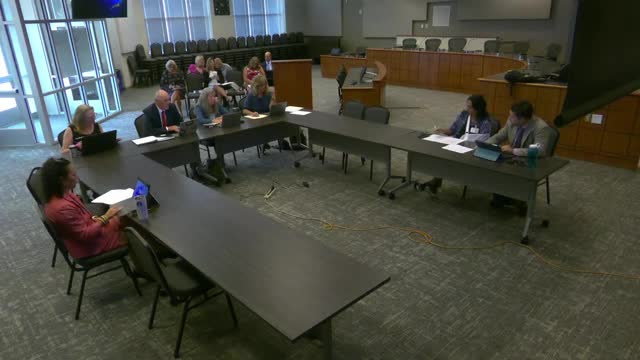School Board Debates Controversial Hoodie Policy Impacting Learning
August 28, 2024 | Frederick County Public Schools, School Boards, Maryland
This article was created by AI summarizing key points discussed. AI makes mistakes, so for full details and context, please refer to the video of the full meeting. Please report any errors so we can fix them. Report an error »

In a recent government meeting, officials engaged in a robust discussion regarding school dress codes, particularly focusing on the implications of students wearing hoods and face coverings in classrooms. The conversation highlighted concerns from educators about how such attire may impact student engagement and classroom dynamics.
One official raised issues surrounding the wearing of hoods, describing it as potentially disrespectful and isolating. They noted that students who pull their hoods up during class may conceal their faces and earbuds, which could detract from their learning experience. This sentiment was echoed by several participants, who emphasized the need for teachers to foster an inclusive and engaged classroom environment.
The dialogue also touched on the cultural significance of clothing choices, with some officials arguing that hoods serve as a comfort item for students, akin to a blanket. They suggested that the focus should not solely be on the attire itself but rather on whether students are actively participating in their education. The discussion proposed that any clothing impacting a student's ability to engage in learning should be addressed, rather than singling out specific items like hoodies.
Concerns were raised about placing additional responsibilities on teachers to enforce dress codes, with calls for clearer policies that support educators rather than burden them. The need for language that connects dress code enforcement to student engagement was emphasized, suggesting that if students are not participating, it should be addressed regardless of their attire.
The meeting concluded with a proposal to refine the language of the dress code policy to include provisions that address any clothing that may disguise earbuds or interfere with the learning experience. Officials agreed to seek feedback from educators and school leaders to ensure the policy is effective and sensitive to the diverse needs of students.
One official raised issues surrounding the wearing of hoods, describing it as potentially disrespectful and isolating. They noted that students who pull their hoods up during class may conceal their faces and earbuds, which could detract from their learning experience. This sentiment was echoed by several participants, who emphasized the need for teachers to foster an inclusive and engaged classroom environment.
The dialogue also touched on the cultural significance of clothing choices, with some officials arguing that hoods serve as a comfort item for students, akin to a blanket. They suggested that the focus should not solely be on the attire itself but rather on whether students are actively participating in their education. The discussion proposed that any clothing impacting a student's ability to engage in learning should be addressed, rather than singling out specific items like hoodies.
Concerns were raised about placing additional responsibilities on teachers to enforce dress codes, with calls for clearer policies that support educators rather than burden them. The need for language that connects dress code enforcement to student engagement was emphasized, suggesting that if students are not participating, it should be addressed regardless of their attire.
The meeting concluded with a proposal to refine the language of the dress code policy to include provisions that address any clothing that may disguise earbuds or interfere with the learning experience. Officials agreed to seek feedback from educators and school leaders to ensure the policy is effective and sensitive to the diverse needs of students.
View full meeting
This article is based on a recent meeting—watch the full video and explore the complete transcript for deeper insights into the discussion.
View full meeting
